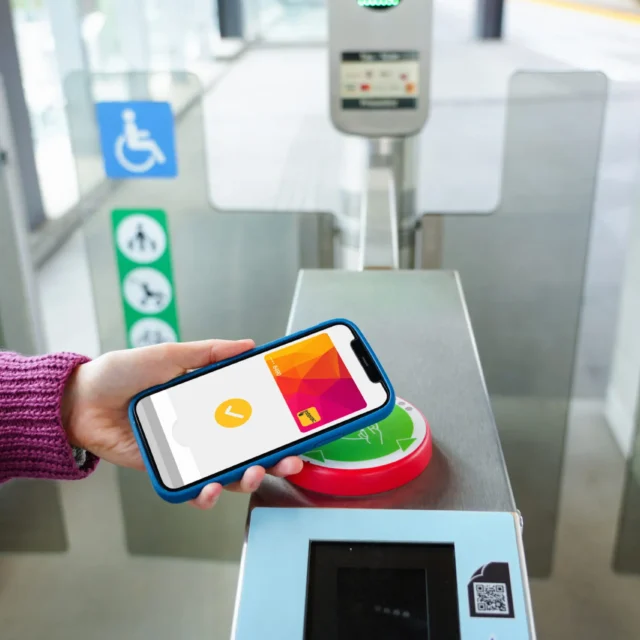Introducing digital identity in Canada would provide people with safe and secure ways to manage and protect their ID online, including on their mobile devices. They’ll take control of their personal information in a way that offers digital identity verification as well as data protection, allowing them to choose what information is shared and with whom.
Before we get there, we need to tackle certain challenges. Having spent the last several years exploring how Interac can move digital ID forward, I’m certain we can overcome them. (Update: Interac acquires SecureKey digital ID services for Canada: Five things you need to know.)
To help fuel that conversation, I’ve identified three of the major opportunities that digital ID brings, the obstacles we need to overcome in order to seize those opportunities — and some thoughts on how we can navigate the challenges.
Opportunity 1: Critical-mass adoption of digital ID could make it more difficult for criminals to commit identity theft
Challenge 1: Canadians understand the convenience that digital IDs would bring, but they worry it won’t offer the same data protection as traditional, physical documents.
According to Trust and Identity in a Digital World, a survey that Interac conducted, when we presented Canadians with scenarios where digital versions of passports, driver’s licences and health cards could be used, the vast majority (86 per cent) felt that the digital version was more convenient than the physical version in at least one case. However, nearly two-thirds (65 per cent) fear that a digital ID would be at a greater risk of theft than a physical ID.
Obviously, we have some work to do in order to address those assumptions. Digital IDs can offer greater cyber security and data protection than physical documents, but there’s a knowledge gap that we must overcome.
For some people the superior security of digital ID can be a counterintuitive idea, but let’s take a moment to think about the inherent risks of physical ID documents.
Take a look at your driver’s licence, for instance. It’s littered with all sorts of sensitive personal information — your address, your likeness, and so on. Now imagine you’re checking into a hotel. Behind the desk there are surveillance cameras, which may be connected to the internet. There is a potential for fraudsters to hijack those devices. That creates the possibility that your information could be recorded as you’re showing your driver’s licence to the attendant behind the desk while you check in.
And that’s just one example of what we’re talking about with regard to the risks of physical ID.
Instead, digital ID could allow you to share this information through secure, encrypted channels, safeguarding your personal information. Digital ID would be encrypted through a process called tokenization, which protects personal information during transactions.
Tokenization is already an integral part of existing Interac platforms and we believe it will play a key role in securing digital IDs.
Opportunity 2: A switch to digital ID could increase convenience, while putting an end to data-protection and cyber security risks associated with the practices we employ when we use our physical ID documents.
Challenge 2: While our lives have become increasingly digital, many of our most frequently used IDs — such as driver’s licences and health cards — remain physical in nature. In order to save and share their ID digitally, Canadians are improvising by taking photos of their physical documents. For example, our research has shown that 45 per cent of Canadians have taken a photo or screenshot of an identity document, despite the fact that 59 per cent realize that this is risky!
And in a world of physical ID documents, sometimes there’s no way to avoid taking a risk. Vacation properties, for example, can require renters to verify their identity by sharing or showing a driver’s licence or passport.
Education can help Canadians learn about the risks associated with taking and sharing photos of identity documents, but I believe the bigger and better solution is to establish digital ID as a fixture in our daily lives. That will make it unnecessary to share our identity documents through unsecure channels in the first place.
Opportunity 3: Digital ID could improve the convenience and effectiveness of both government and private sector services
Investments in digital government could also reduce the cost of delivering services. The Digital Identity and Authentication Council of Canada (DIACC) estimates that nearly $500 million is lost each year in productivity due to a reliance on manual validation of identity — usually associated with people needing to visit an office in-person to present and verify their identity documents.
Digital ID is one major missing piece that can help us increase efficiency and support greater convenience for governments, businesses and consumers.
Challenge 3: Implementing digital ID will require co-ordination between a large number and range of stakeholders, including governments and regulators, associations, banks and financial institutions.
Let’s remember that we use our ID in many different situations. When you open a bank account, for example, you’re pulling out your driver’s licence, your passport, or some other form of identification. You even have to show your ID to get a mobile plan.
An effective digital ID regime also requires an appropriate level of trust to be established between the entities and organizations involved in delivering the technology and Canadians who will use it.
Canadians value data protection when it comes to identity
Our research shows that eight in ten Canadians (83 per cent) describe their identity as one of their most valuable assets, with 52 per cent indicating it is more important to protect their identity online than their money.
With this in mind, we asked what the top factors were for Canadians when it comes to deciding whether to trust digital IDs enough to use them. The top three results included: transparency around how personal information is used, endorsement by banks and endorsement by government.
Because implementing digital ID and building trust is a shared challenge, partnerships between public- and private-sector organizations will be essential for its success.
Interac and digital identity
Interac has a history of working with a wide range of entities in order to bring new technology into Canadians’ lives, while creating an atmosphere of trust around these innovations. While most think of Interac as a payments company, the foundational technology behind our secure payments network — currently used by Canadians 16 million times each day on average — puts us in a good position to enable digital ID across a range of devices and platforms.
The path forward is exciting, and at Interac we look forward to continuing to work with our partners in the identity ecosystem to enable innovation in digital ID, always built on a foundation of trust.





